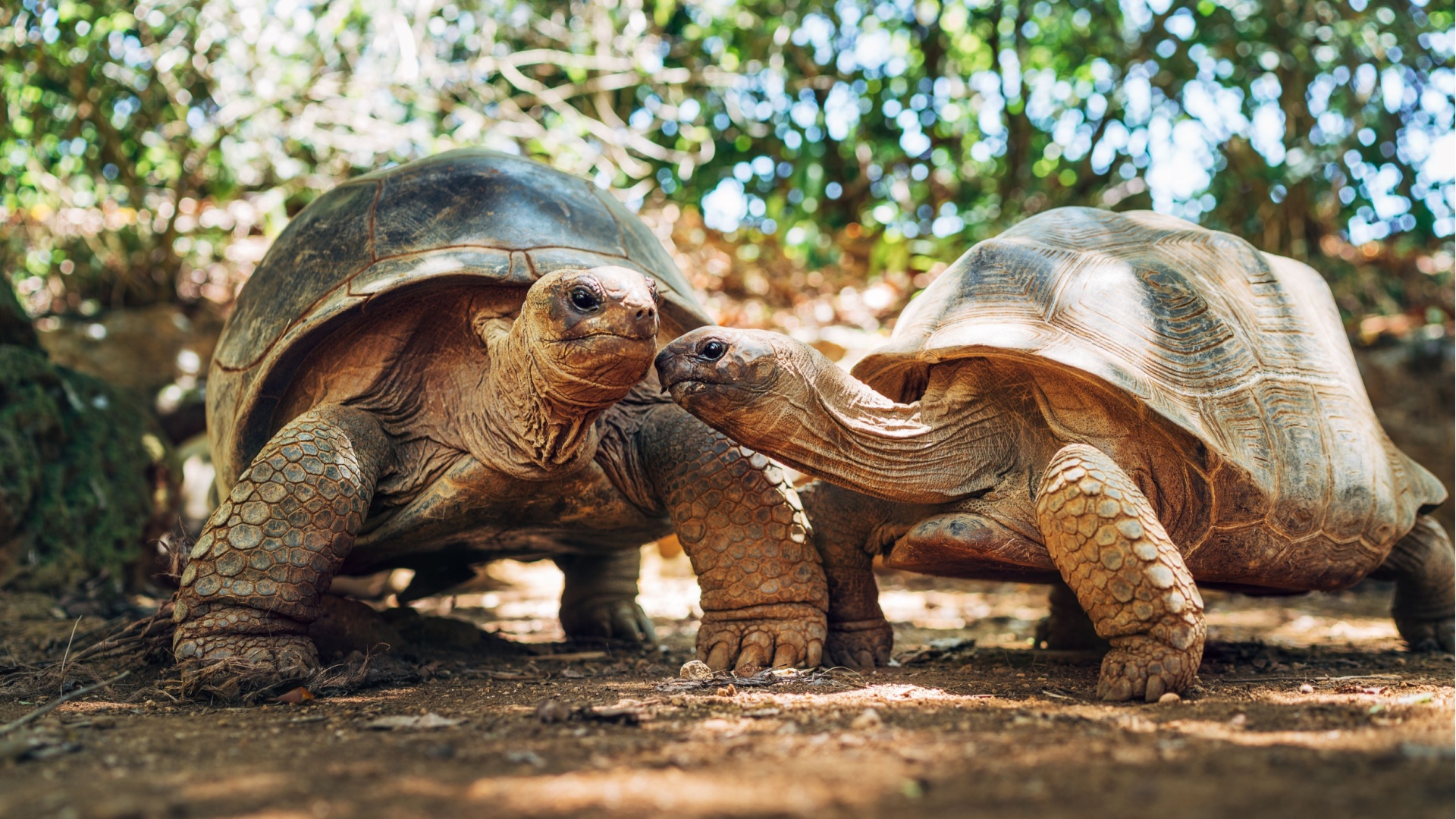Giant tortoises are among the most fascinating and iconic creatures on the planet. With their colossal size and leisurely pace, these majestic reptiles have captured the imagination of explorers and scientists alike.
From the remote Galápagos Islands to the Seychelles, giant tortoises have become symbols of endurance and longevity. Let’s explore the unique characteristics and surprising aspects of these incredible animals.
Prepare to be amazed by the tales of their adaptability, unique behaviors, and the vital role they play in their ecosystems.
1. Longevity Champions
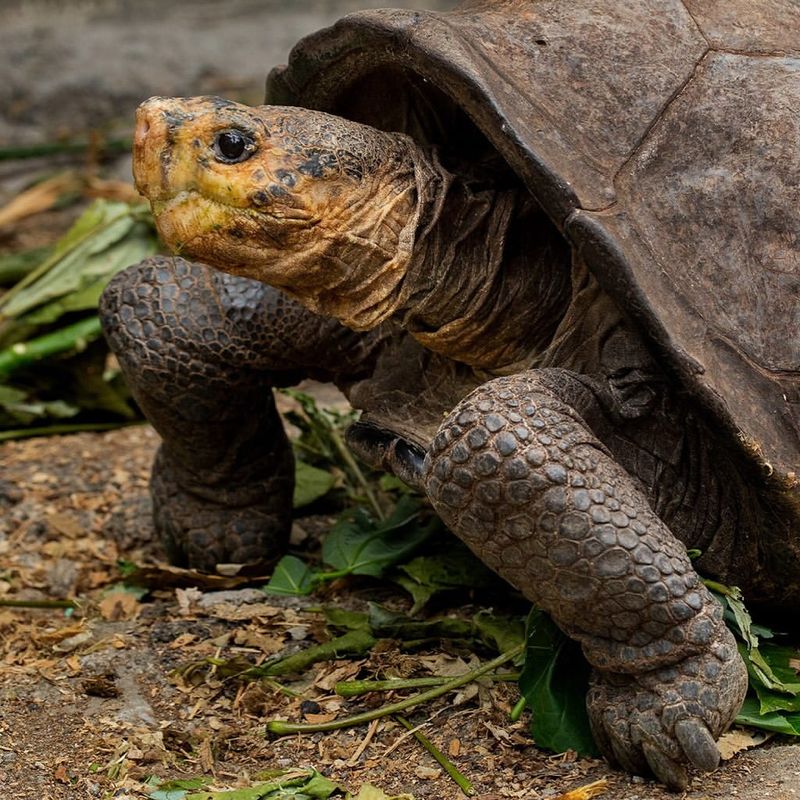
Giant tortoises are well-known for their longevity, often living over a century. Some individuals have been documented to surpass 150 years, making them some of the longest-lived animals on earth. Their extended lifespan is attributed to their slow metabolism and the absence of natural predators in their habitats.
While they experience leisurely lives, their slow pace doesn’t hinder their survival. Instead, it allows them to conserve energy and sustain themselves on limited resources. This longevity has fascinated scientists, leading to numerous studies to understand the genetic secrets behind their enduring lives.
The remarkable lifespan of giant tortoises not only intrigues researchers but also makes them valuable indicators of environmental health. They serve as living witnesses to the changes in their ecosystem over generations, providing insights into how species adapt to evolving habitats.
Their ability to thrive for such extended periods remains a subject of admiration and study, symbolizing resilience and continuity in nature.
2. Unique Shell Structure
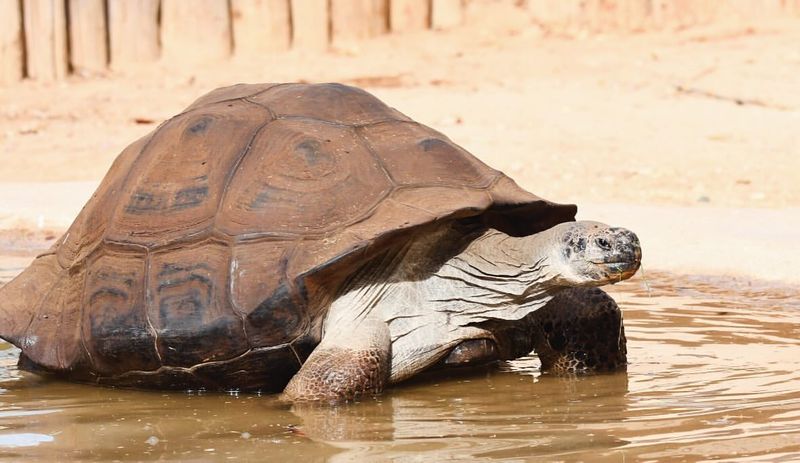
The shell of a giant tortoise is not just a protective barrier; it’s a marvel of natural engineering. Composed of a carapace and plastron, the shell is made up of bony plates covered by scutes. These scutes, formed from keratin, give the shell its distinct patterns and textures, differentiating species and individuals.
Unlike many reptiles, the shell of a giant tortoise is an integral part of its skeleton, connected to the rib cage and spine. This connection provides structural support, enabling them to carry their hefty weight. The dome-shaped design also serves to deflect predators, offering an additional layer of defense. Beyond protection, the shell plays a crucial role in thermoregulation.
By adjusting their posture, tortoises can regulate body temperature, absorbing heat when needed and cooling down in the shade. This adaptation is vital for survival in their often harsh, arid environments.
The shell of a giant tortoise is more than just armor; it’s a testament to millions of years of evolution, perfectly suited to their ecological niche.
3. Dietary Habits
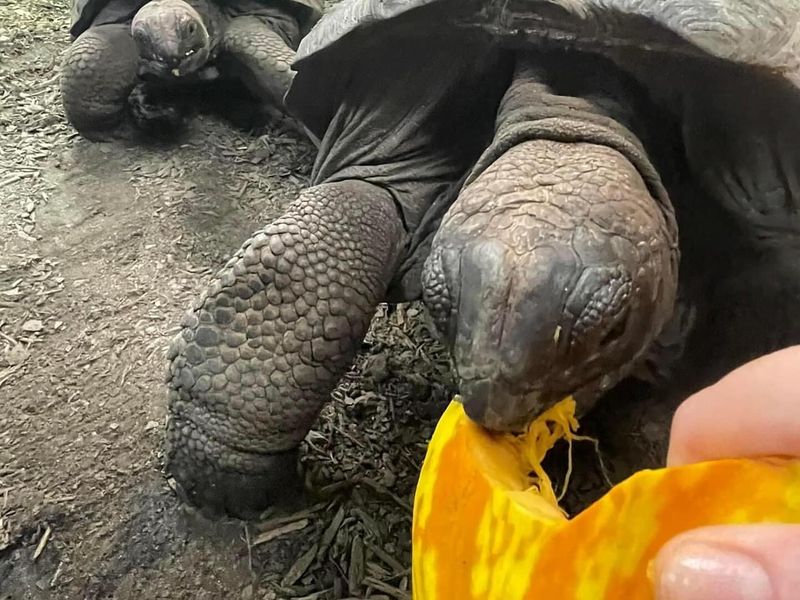
Their feeding habits play a significant role in their ecosystem, influencing vegetation patterns and seed dispersal. By consuming various plant matter, they help maintain the balance of their habitat, preventing overgrowth and fostering biodiversity. They possess a slow metabolism, which allows them to survive on a diet that may seem scarce.
This metabolic adaptation enables them to thrive in environments where food sources can be limited. Their ability to store fat also aids in enduring periods of scarcity, showcasing their resilience. Interestingly, their diet varies depending on the season and available flora, demonstrating their adaptability. In some instances, they’ve been observed consuming carrion and invertebrates, highlighting their opportunistic feeding behavior.
The dietary habits of giant tortoises are not only essential for their survival but also for the health and sustainability of their ecosystem. Their role as ecological influencers underscores their importance in maintaining the delicate balance of nature.
4. Migration Patterns
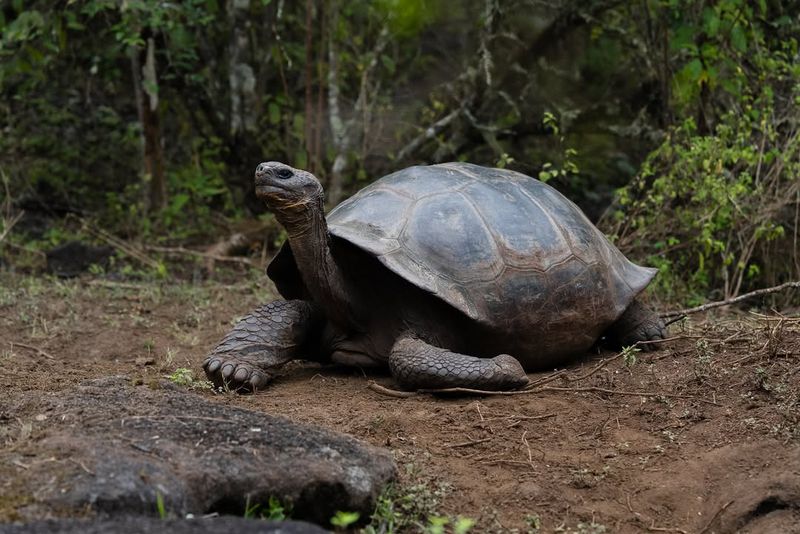
Migration among giant tortoises is a phenomenon driven by the search for food and suitable nesting sites. These gentle giants undertake seasonal migrations, moving from dry lowlands to lush highlands as the climate and vegetation change throughout the year. Their migratory routes are ingrained over generations, passed down through innate behavior rather than taught knowledge.
This instinctual journey is crucial for their survival, enabling them to access varied food sources and optimal breeding grounds. Despite their slow movement, they cover considerable distances over time, demonstrating remarkable perseverance. The migration of giant tortoises also plays a vital role in their ecosystem.
As they travel, they act as agents of seed dispersal, inadvertently carrying seeds in their feces across different areas. This natural process aids in plant propagation and contributes to habitat diversity. The migratory patterns of giant tortoises highlight their adaptive nature and their interconnectedness with the environment, illustrating their essential role in the web of life.
5. Behavioral Adaptations
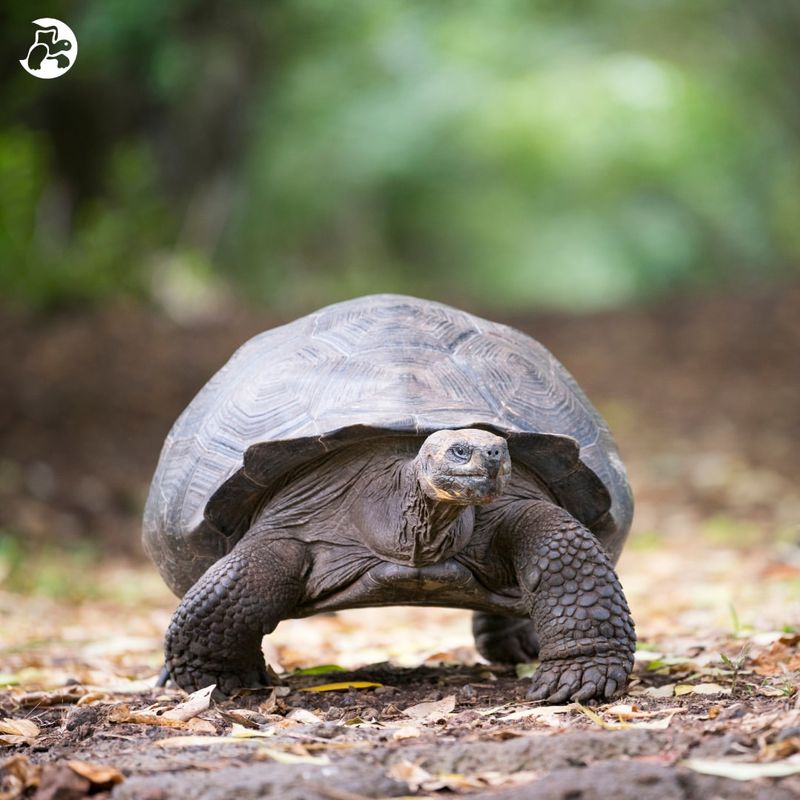
Giant tortoises exhibit a range of behavioral adaptations that help them survive in their often challenging environments. One such adaptation is their ability to withstand extreme temperatures by seeking shade during the hottest parts of the day. This behavior minimizes water loss and prevents overheating, critical for survival in arid regions.
Their social structure is another fascinating aspect of their behavior. While generally solitary, they exhibit a complex social hierarchy when interacting, especially during mating season. Males often engage in displays of dominance to establish territory and attract mates, showcasing their competitive nature.
Communication among giant tortoises is subtle yet effective, relying on body language and slight vocalizations. These behaviors facilitate interaction and cooperation, especially in densely populated areas.
The behavioral adaptations of giant tortoises not only ensure their survival but also reveal the intricate ways they interact with each other and their environment, showcasing the depth of their evolutionary success.
6. Historical Significance
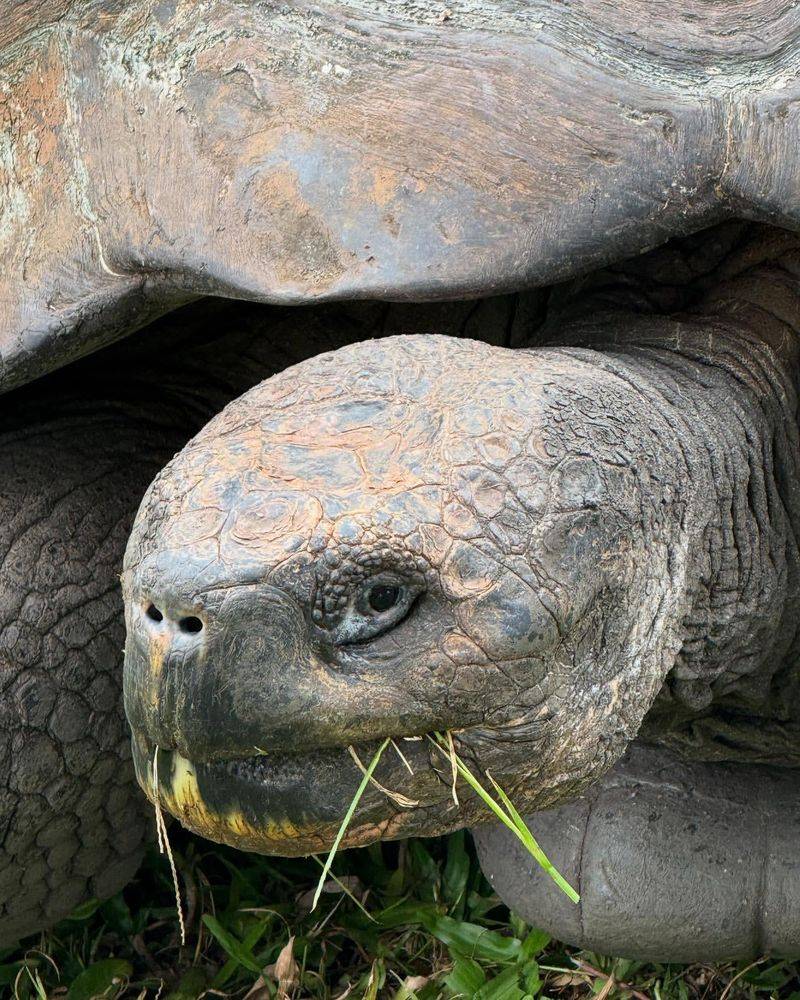
Their enigmatic presence on remote islands like the Galápagos has fascinated scientists and contributed to the study of evolution and natural selection. The observations made by Charles Darwin during his voyage on the HMS Beagle highlighted the unique adaptations of these tortoises, shaping his theories on species divergence.
Historically, giant tortoises faced exploitation by sailors who sought them as a food source during long voyages. Their ability to survive without food and water for extended periods made them an unfortunate target, leading to population declines. This exploitation prompted early conservation efforts, recognizing the need to protect these remarkable creatures.
Today, giant tortoises are celebrated as symbols of conservation success, representing the resilience of nature and the efforts to preserve biodiversity. Their historical significance extends beyond their biological attributes, embodying the interconnectedness of exploration, science, and environmental stewardship.
7. Reproductive Strategies
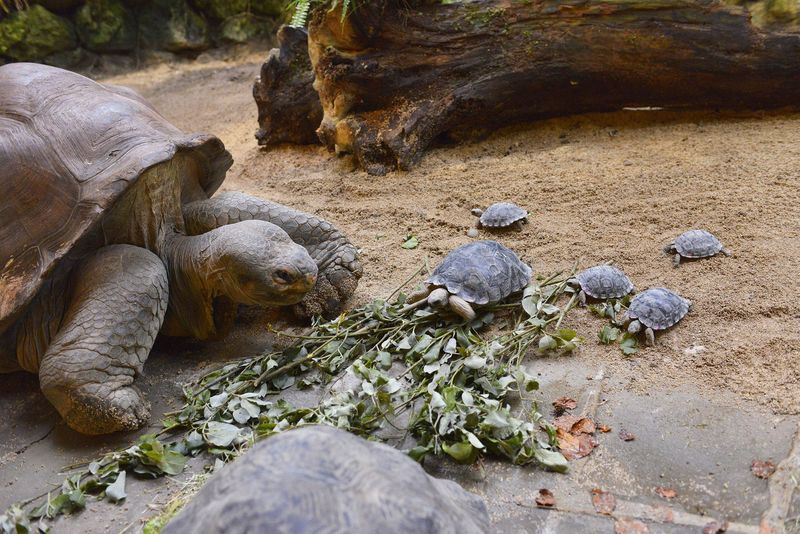
The reproductive strategies of giant tortoises are deeply adapted to their environments, ensuring the continuation of their species. Females lay their eggs in nests dug into sandy soil, a process that requires careful selection of location to optimize temperature and protection from predators. The incubation period of the eggs can last several months, depending on the ambient temperature.
This temperature-dependent development influences the sex of the hatchlings, a fascinating aspect of their reproductive biology. Warmer temperatures tend to produce more females, while cooler conditions favor male offspring. Parental care is minimal, with hatchlings emerging independently and facing the challenges of survival from birth.
Despite the lack of direct care, the reproductive success of giant tortoises lies in their sheer number of offspring and the strategic selection of nesting sites. The reproductive strategies of giant tortoises are a remarkable example of evolutionary adaptation, ensuring their persistence in an ever-changing world.
8. Conservation Efforts
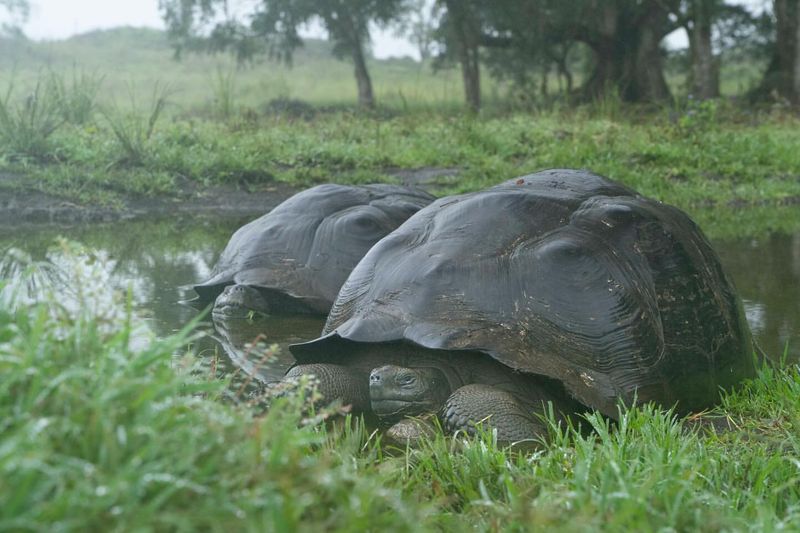
With populations once decimated by human exploitation, dedicated conservation programs have focused on habitat preservation, captive breeding, and reintroduction into the wild. The Galápagos National Park and various wildlife organizations have played pivotal roles in the recovery of giant tortoise populations.
Breeding programs have been particularly successful, raising hatchlings in controlled environments until they are robust enough to be released. These efforts have led to a notable increase in tortoise numbers, showcasing the power of coordinated conservation. Education and community involvement are also crucial components of conservation strategies.
By engaging local communities, conservationists have fostered a sense of stewardship and responsibility towards these majestic animals. The success of giant tortoise conservation is a testament to human dedication to preserving biodiversity and the hope that endangered species can thrive once again.
9. Ecosystem Engineers
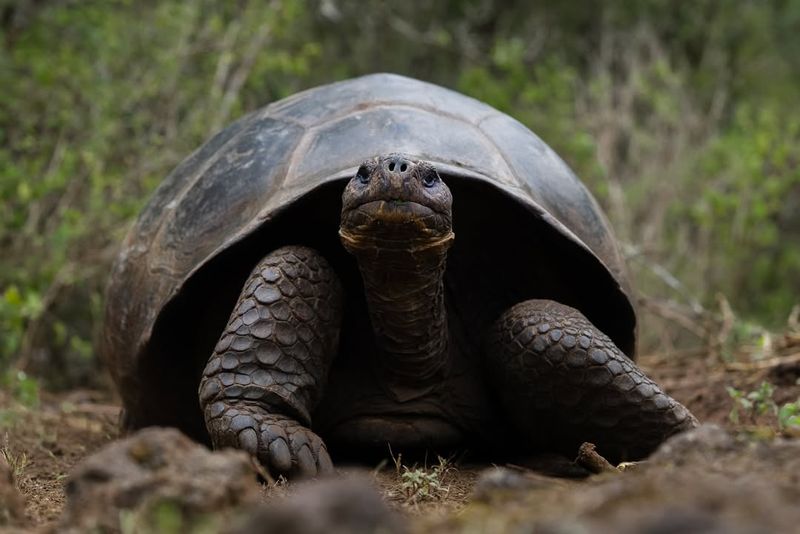
Giant tortoises are often referred to as “ecosystem engineers” due to their significant impact on the environments they inhabit. As they roam, they alter the physical landscape, creating pathways and clearing vegetation, which in turn benefits other species. Their grazing habits control plant growth, preventing any single species from dominating and thus supporting biodiversity.
By dispersing seeds through their droppings, they promote the growth of plants across different areas, enhancing habitat diversity and resilience. The presence of giant tortoises influences the entire ecosystem, affecting everything from soil composition to the distribution of flora and fauna.
Their role as ecosystem engineers highlights the interconnectedness of life, where the actions of one species can have profound impacts on the broader environment. Understanding and preserving this role is vital for maintaining the health and balance of their natural habitats.
10. Physical Characteristics
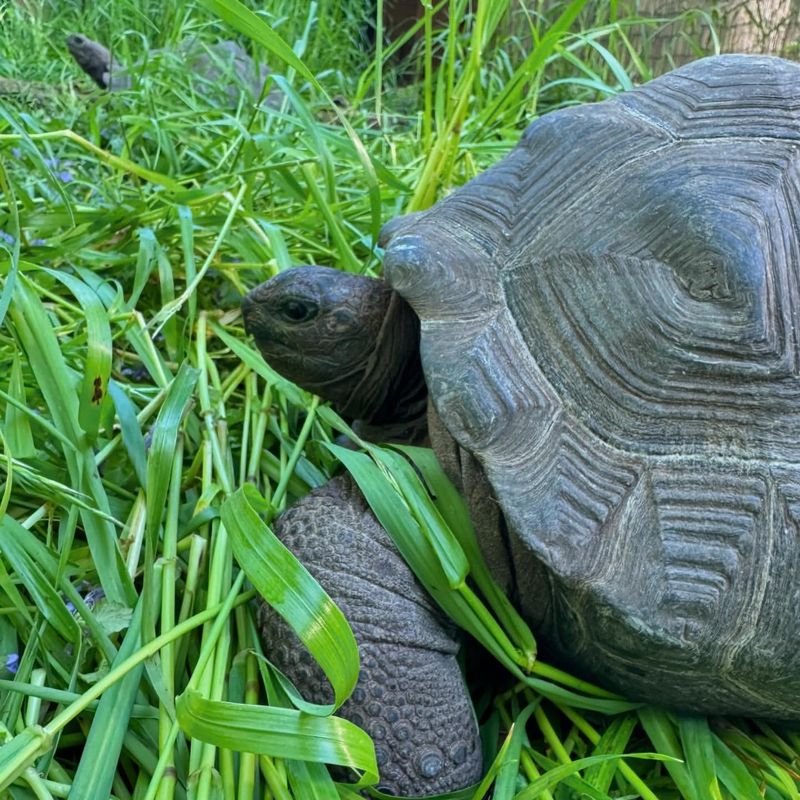
With their large, domed shells and sturdy limbs, they are built for endurance rather than speed. Their massive size, often reaching up to 500 pounds, is a defense mechanism against predators and a consequence of island gigantism.
Their powerful legs are designed to support their heavy bodies, allowing them to traverse various terrains with surprising ease. The thick, scaly skin of giant tortoises protects them from the harsh sun and reduces water loss, a crucial adaptation for survival in arid climates. The distinctive features of their heads, including sharp beaks, enable them to efficiently consume a variety of vegetation.
These physical characteristics not only define their appearance but also play a critical role in their survival and ecological function. Each aspect of their anatomy is a testament to the evolutionary pressures that have shaped these remarkable creatures over millennia.
11. Habitat Range
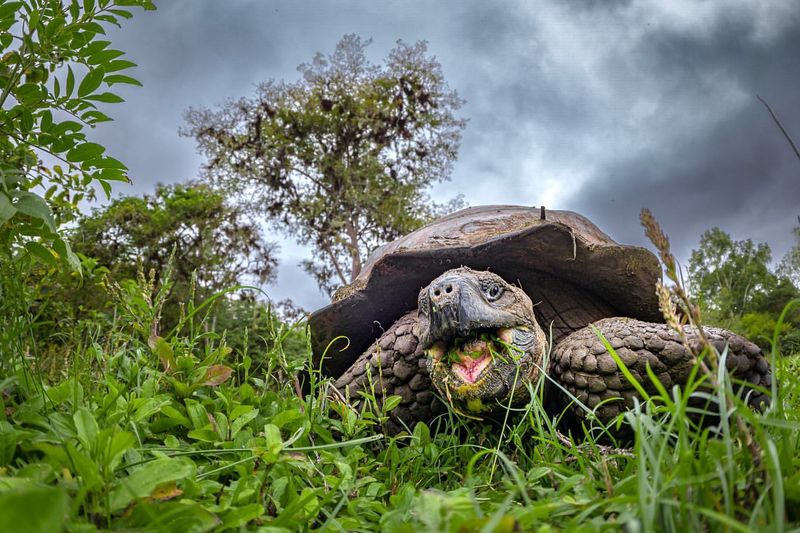
Giant tortoises inhabit a range of environments, from the lush, tropical forests of the Seychelles to the arid, volcanic landscapes of the Galápagos Islands. This diversity in habitat range is a testament to their adaptability and resilience in the face of environmental challenges. Their habitat selection often depends on the availability of food sources and nesting sites, which vary across different islands.
The diverse landscapes they inhabit provide a variety of ecological niches, each supporting distinct species of tortoises with unique adaptations. The fragmentation and isolation of their habitats have led to the evolution of unique subspecies, each with characteristics finely tuned to their specific environment.
This diversity highlights the evolutionary history of giant tortoises and underscores the importance of preserving their natural habitats. Protecting these diverse ecosystems is crucial for the continued survival and prosperity of giant tortoises and the myriad of other species they support.
12. Tortoise Communication
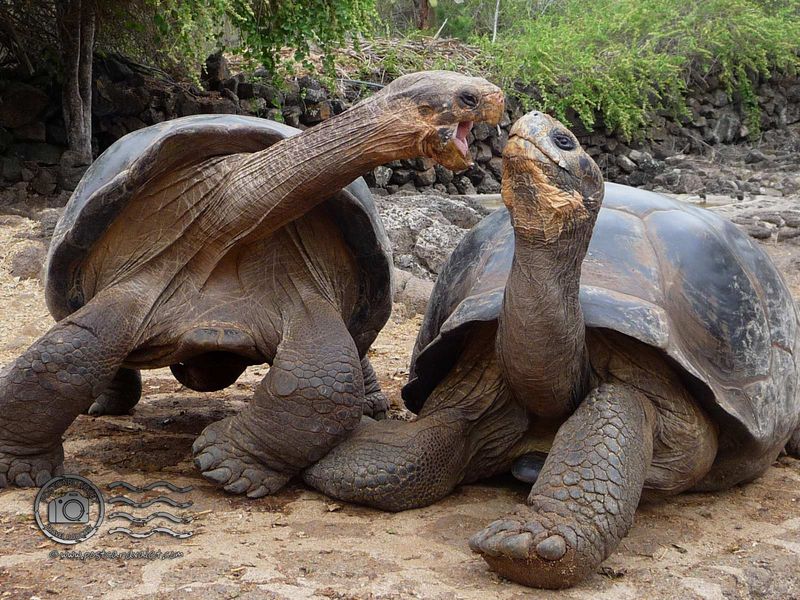
Communication among giant tortoises is a subtle yet fascinating aspect of their behavior. While they lack vocal cords, these creatures utilize body language and physical gestures to interact with one another. Head movements, posture changes, and gentle nudges convey a range of messages, from establishing dominance to initiating mating rituals.
During mating season, males become more vocal, producing deep, resonant sounds that can be heard over long distances. These vocalizations serve as a means to attract females and ward off rival males. The communication strategies of giant tortoises are not only vital for social interactions but also play a role in their survival and reproductive success.
Understanding these communication methods offers insights into the complex social dynamics of giant tortoises. It also highlights the adaptability of these animals, who have evolved unique ways to convey information without relying on vocalizations.
13. Threats And Challenges
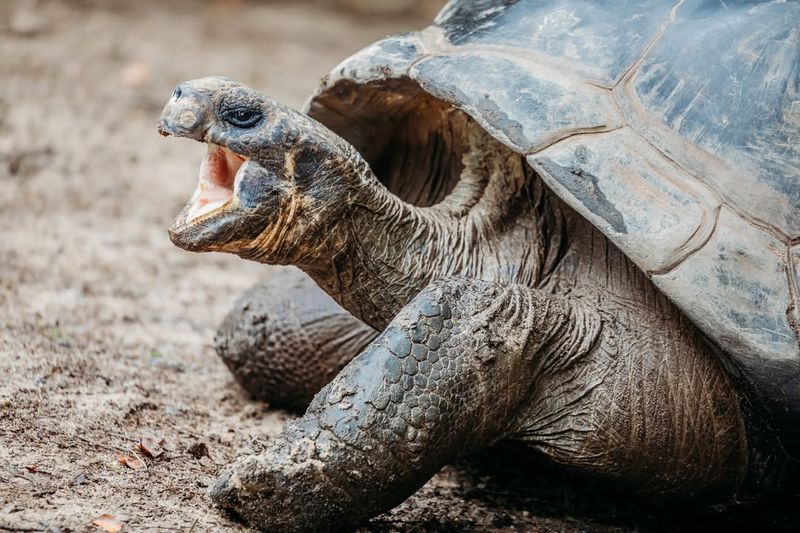
Despite their remarkable adaptations, giant tortoises face numerous threats and challenges in the modern world. Habitat destruction, driven by agricultural expansion and urban development, poses a significant risk to their survival. The loss of natural habitat reduces the availability of food and nesting sites, placing immense pressure on tortoise populations.
Invasive species, such as rats and feral cats, have also had a detrimental impact, preying on eggs and young tortoises. These predators, introduced by humans, disrupt the delicate balance of island ecosystems.
Conservation efforts focus on controlling invasive species and restoring habitats to mitigate these threats. Climate change poses an additional challenge, altering weather patterns and affecting food availability. The cumulative impact of these threats underscores the importance of ongoing conservation initiatives.
Protecting giant tortoises requires a comprehensive approach, addressing both immediate threats and long-term environmental changes to ensure their survival for future generations.
14. Symbol Of Longevity And Wisdom
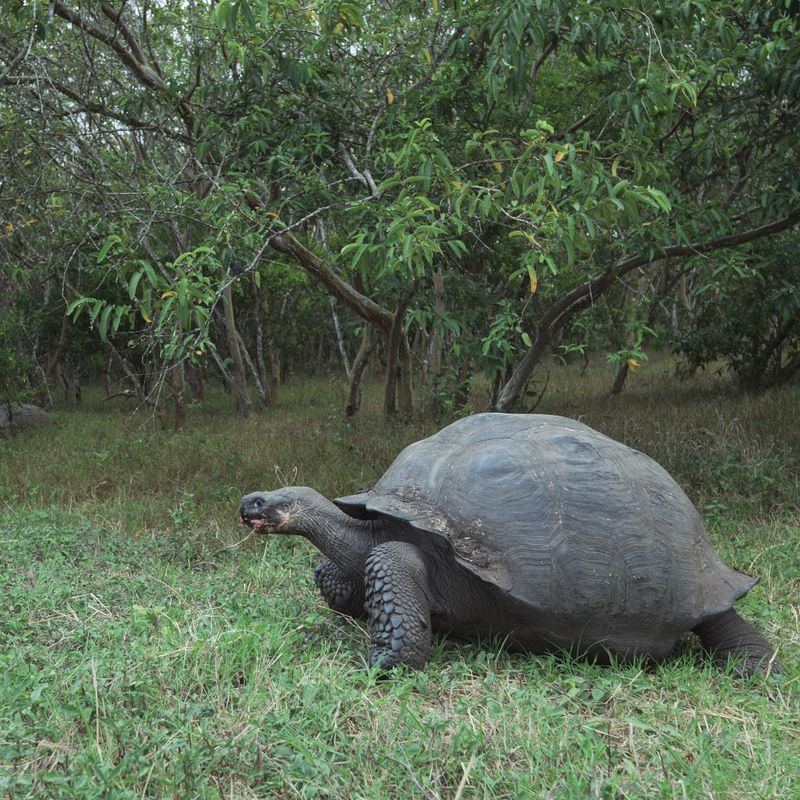
Throughout history, giant tortoises have been revered as symbols of longevity and wisdom. Their slow, deliberate movements and extended lifespans have inspired countless tales and legends, portraying them as wise, ancient creatures possessing profound knowledge.
These cultural representations reflect human admiration for the tortoises’ resilience and ability to endure through the ages. In many cultures, giant tortoises are seen as guardians of the earth, embodying the principles of patience and perseverance.
Their presence in art, literature, and folklore underscores their role as enduring symbols of stability and continuity in an ever-changing world. The symbolic significance of giant tortoises extends beyond mere representation; it serves as a reminder of the importance of preserving nature and respecting the wisdom it embodies.
As living symbols of longevity and wisdom, giant tortoises continue to captivate and inspire, encouraging us to cherish and protect the natural world for future generations.

